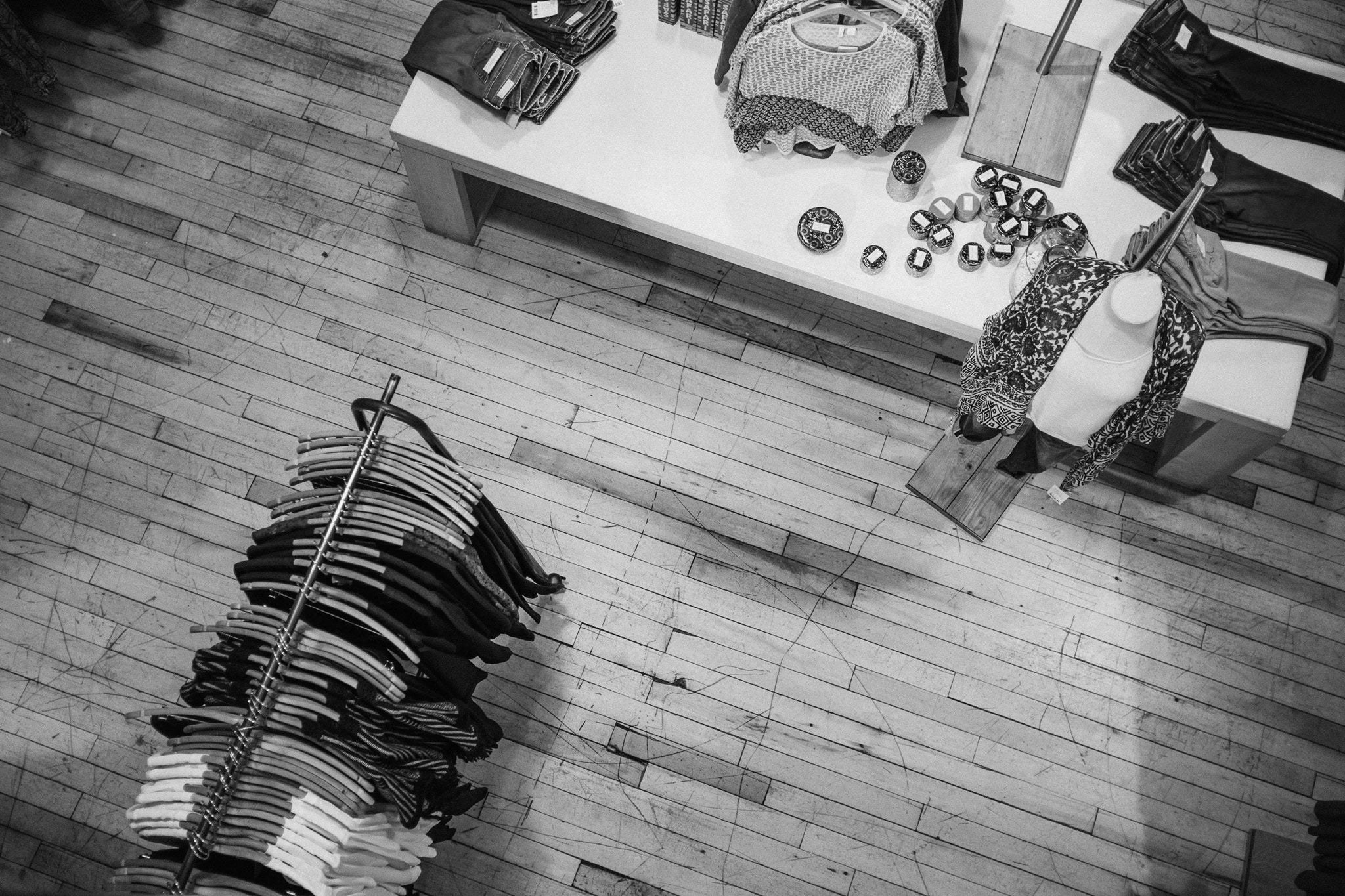
Journal
What is Fast Fashion?
Shopping for clothes used to be an occasional event - something that happened only a few times a year due to weather change or when we outgrew what we had. Over the last 20 years or so this occasional event has now become a form of entertainment to many consumers. Fashion consumerism is at an all-time high as a result of many global chains that currently dominate this industry - i.e. H&M, Forever 21 & Zara to name a few. This is because they are able to provide runway looks and celebrity styles at an inexpensive price, which is known as Fast Fashion.
Fast Fashion utilizes trend replication, rapid production, and low-quality materials in order to bring inexpensive styles to the public.
Although this new constant buying trend may seem like an advancement to the fashion industry, we want to inform our readers that this new wave of fashion is doing more harm than good.
Trend Replication
Prior to the mid-twentieth century, clothing brands ran on four seasons: summer, fall, winter & spring. Designers would work months ahead of time to plan for each upcoming season, predicting what they believed their customer would want to buy. This way of fashion produced high-end expensive clothing that was geared towards mostly high-society folks. Thanks to the Industrial Revolution years later, production of clothing quickened and costs lowered significantly, allowing more clothing to be available to the masses at an affordable price.
Nowadays, the fashion industry has a way of making consumers feel “out of date” as soon as they make a purchase. This is because many of the fast fashion brands now produce about 52 “micro-seasons” a year rather than the simple 4 seasons in previous years - that’s a new collection EVERY WEEK! It’s hard to stay up-to-date when there are new styles constantly appear. These top brands are pumping out new looks at an alarming rate, replicating streetwear, runway looks, and celebrity trends to sell them to the public at a very low cost.
Low Quality & Even Lower Costs
With the increased rate of production, it is inevitable that corners will be cut. Because clothing is made in such a rushed manner, the garments being sold are often very low quality. There simply isn’t enough time to perform proper quality control when these brands put such urgency on getting styles out to their customers.
Many of the garments made in fast fashion manufacturing are thrown away after only a few years. This is because the clothing is made of cheap materials and quick production, making clothes that just don’t last. The same urgency that throws quality out the window also keeps the cost of these garments extremely low.
These brands are able to earn millions of dollars while selling a cheap piece of clothing because of the sheer number of items they sell daily. They are all about getting clothes made at a cheap price - meaning that the materials used are low quality and the people making the clothing are getting paid well below minimum wage. Lucy Siegle, author, and journalist, summed it up perfectly in the documentary The True Cost. “Fast Fashion isn’t free. Someone, somewhere us paying.”
Environmental Impact & Human Rights Violations
 All of the elements we discussed of fast fashion: trend replication, rapid production, low quality, and competitive pricing all add up to a significantly large impact on the environment and the people involved in the production.
All of the elements we discussed of fast fashion: trend replication, rapid production, low quality, and competitive pricing all add up to a significantly large impact on the environment and the people involved in the production.
The environmental damage, which the fashion industry continues to create, is largely due to fast fashion. Many of the large brands make their clothing using toxic chemicals, dangerous dyes, and synthetic fibers that seep back into the water supplies of the foreign countries in which they are produced. The reason that they have been able to get away with this concern for so long is that many of the countries where clothing is produced are still developing, meaning they have minimal laws against pollution and working conditions.
Majority of the chemical waste produced in these factories are dumped directly into the rivers, polluting the water supply, endangering not only people who live there but also many of the fish and other marine life in our oceans.
Additionally, the garment workers in these factories have no protection or laws in their favor. These people work very long hours for minimal pay, being exposed to harsh chemicals, toxins, and even physical abuse. But what do the big chains care? They are making their money and that’s all that matters to them.
URBAMERICAN Takes a Stand
Slow Fashion is on the rise and URBAMERICAN is joining the cause! Slow fashion is a movement towards mindful manufacturing, fair labor rights, use of natural materials, minimal waste & the production of lasting garments. We are spreading the word about conscious fashion and hoping we can get your support! At URBAMERICAN, we are fighting for the safety of our planet and fellow humans through our apparel by:
✓ Eliminating waste
✓ Making clothing per order
✓ Using quality materials
✓ Printing with eco-friendly inks
✓ Never outsourcing our products
Buying a garment from a responsible brand ensures that you have agency over your personal style, you’re getting quality products, and are protecting those that need it most! Do some good for the planet and shop URBAMERICAN!
Read More
Urbamerican + PUMP Magazine!
Quarantine Adventures
Quarantine is the pits. While it’s important to stay safe and distant from others during this time, the walls in our office do start to feel like they are closing in on us at times. Does anyone else feel like that? So, we decided to take matters into our own hands with two simple words - road trip.





